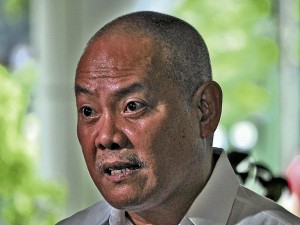There’s nothing worse than parents seeing their children fighting cancer and not knowing if their loved ones will be completely cured of the dreaded disease.
Indeed, more than the money that parents like Ave Torente must raise to support the continuous treatment, what is more unbearable is the sight of their child, going through round after round of chemotherapy.
“No children should go through this. My daughter’s battle with acute lymphocytic leukemia—a cancer that starts from white blood cells called lymphocytes—has only made me more resolved to fight for better funding and awareness of pediatric cancers,” said Torente whose 5-year-old daughter, Lacey Ann, is now on her fourth year of chemotherapy maintenance phase.
According to Dr. Julius Lecciones, executive director of Philippine Children’s Medical Center, hundreds of courageous children and their devoted families endure the lasting effects of cancer treatment each year.
Great financial cost
“While most childhood cancers are considered highly curable, survival often comes with a ‘cost.’ Treating childhood cancer often comes at a great financial cost to families considering the average out-of-pocket cost for a family with a child battling cancer could reach tens of thousands,” Lecciones said.
The PCMC is the national and referral center for childhood cancer and is the country’s leading institution for pediatric cancer research.
“This is the place (PCMC) where you will meet indigent parents who are willing to endure everything just to see their child get the necessary treatment and this is also where you will witness how a number of their children, after a couple of years of battling it out, were able to survive from the clutches of cancer,” related Lecciones who is also one of the country’s leading pediatric oncologists and one of the most vocal advocates of affordable modes of treatment for pediatric cancer.
The doctor reported that every year, an estimated 3,500 Filipino children get stricken with cancer but only 2,500 of them get to be diagnosed.
Most of these children are afflicted with retinoblastoma (cancer of the eye), acute lymphoblastic leukemia (cancer of the white blood cells) and lymphoma (cancer of the lymph nodes).
Lecciones lamented that treatments are not standardized across the country and that treatment decisions rely mainly on the financial capacities of the families, which is why only one out of five receives the gold standard of treatment.
For the majority of poor children that come to PCMC for help, treatment protocols are more often strongly modified.
ASIDE FROM the challenge of raising funds to support their afflicted children, these parents are doing their best to spread the word about pediatric cancer. Photo by Charles E. Buban
“There exists an insufficient access to healthcare because two-thirds of Filipino children with cancer are diagnosed too late such that cure is no longer possible. Moreover, out of the 20 to 30 percent of the cases that were detected early, a significant number abandon treatment due to the high cost of chemotherapy and supportive care,” he said.
PCMC program
However, in the last five years, Lecciones said the PCMC, together with private partners, has been successful in improving the treatment of pediatric cancer in the limelight through the hospital’s My Child Matters Program.
The program seeks to improve the treatment of the three most common types of childhood cancer and to educate and train health personnel on the grass-roots level to recognize such cancers and channel immediate referrals to doctors in order to diagnose the disease early and give appropriate treatment.
The institutions helping the PCMC include the Union for International Cancer Control and pharmaceutical company sanofi-aventis that already donated around P10 million to PCMC since 2006.
Last month, the French pharmaceutical giant donated P841,000 in check to support the hospital’s continuing My Child Matters program.
“Thanks to My Child Matters Program and the current availability of the free chemotherapy drug for indigents through the National Center for Pharmaceutical Access and Management of the Department of Health, the hospital’s current two-year survival rate has improved to 70 percent while the five-year survival rate to 50 percent,” Lecciones said.
He also stressed the need to further improve the ability of the country’s healthcare workers and even doctors in the countryside to identify several early signs of cancer in children.
Improving
Lecciones said that PCMC is currently improving the referral system through the 13 satellite centers located within select hospitals around the country. “PCMC provides technical advice to the staff of these centers on how to set up a more effective pediatric oncology referral unit,” he added.
The 13 satellite centers of PCMC is crucial considering that due to concentration of resources in Metro Manila and less developed public hospitals in the province, only 1,000 out of 3,500 children will be diagnosed and cared for.
Moreover, only a handful of pediatric oncologists are stationed in the outlying areas of the country.
“Indeed, the battle against pediatric cancer is huge. We need the support of everyone—from government agencies, to private companies, down to families and individuals,” Lecciones appealed.
